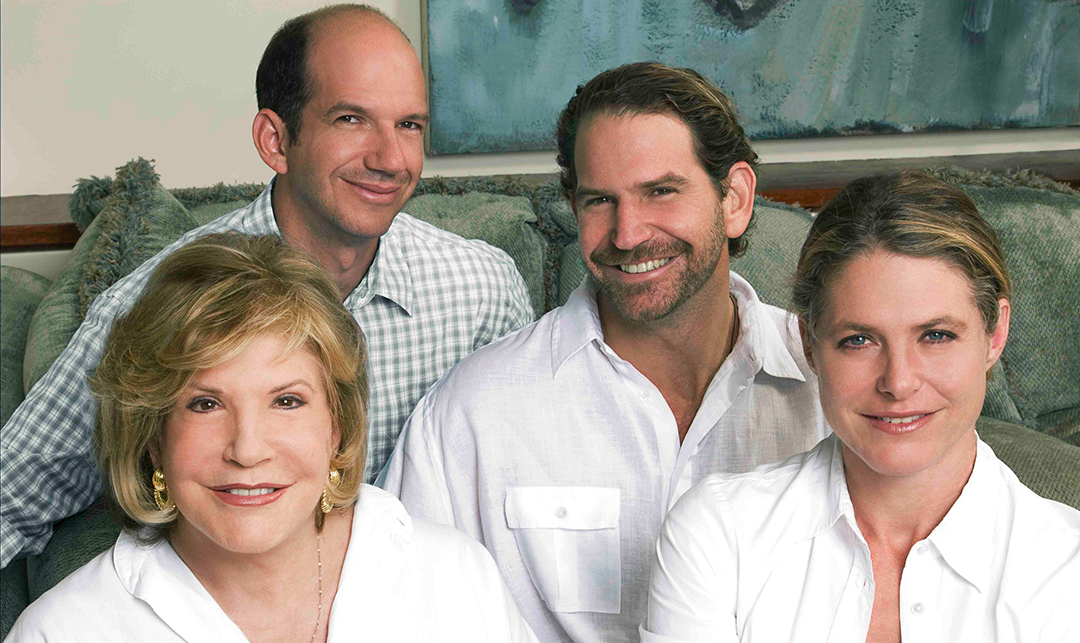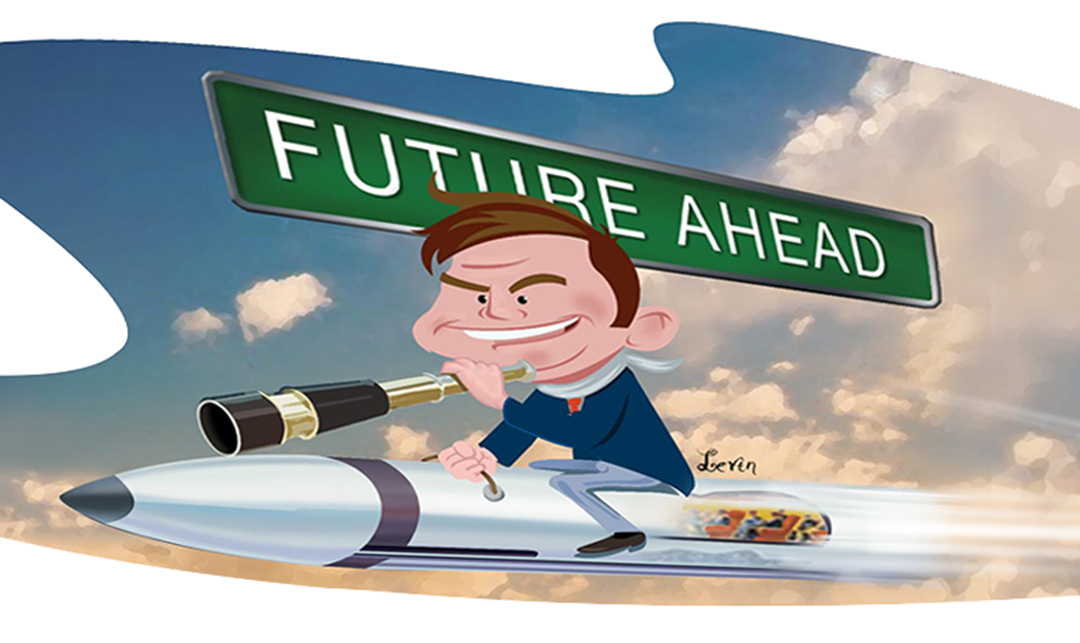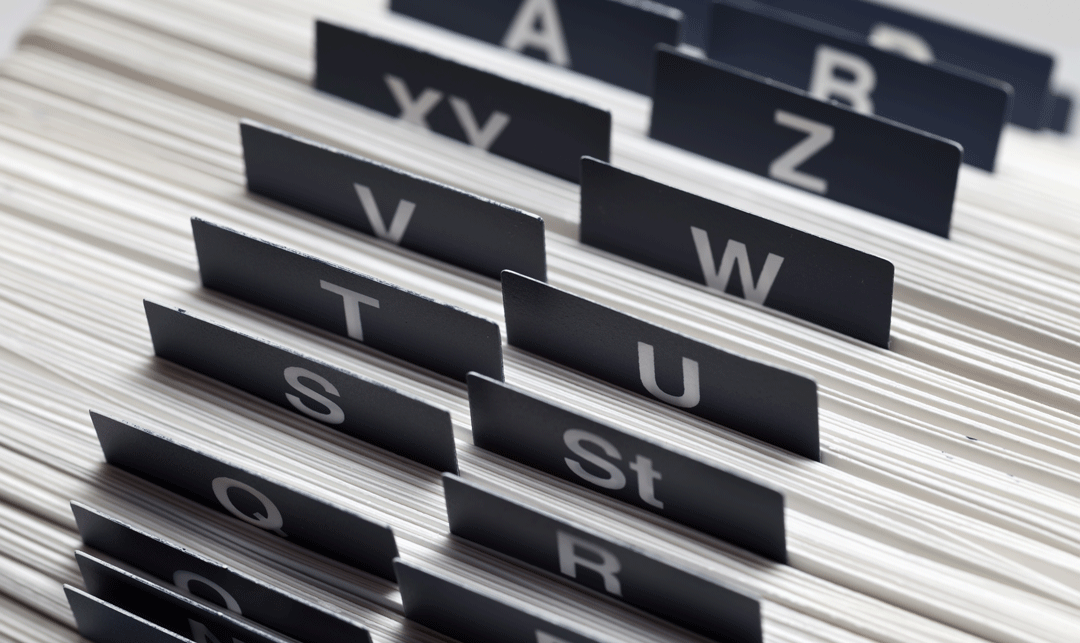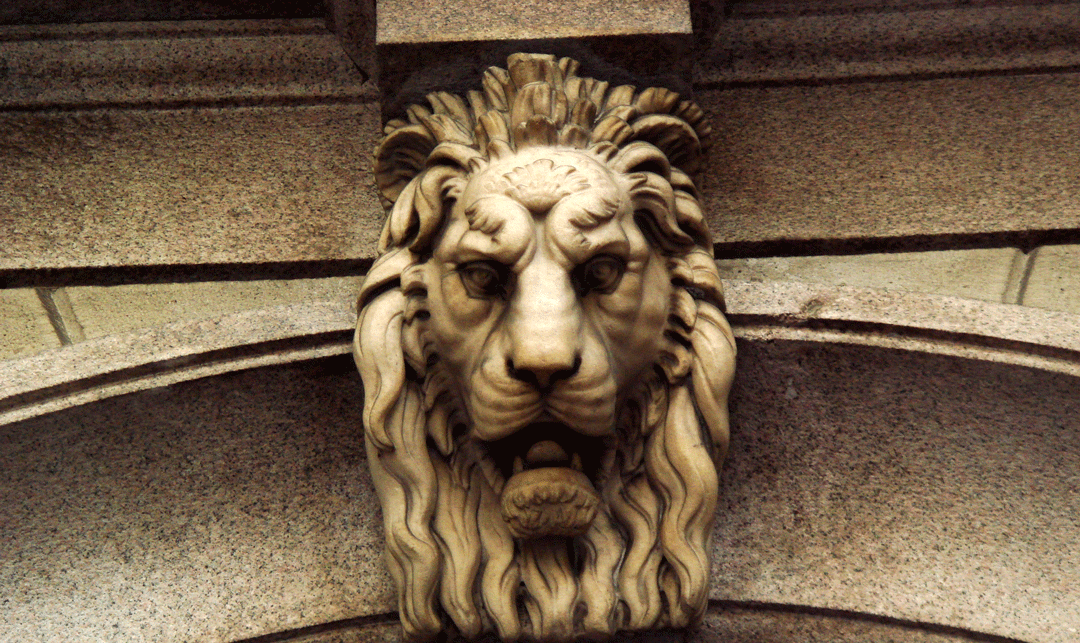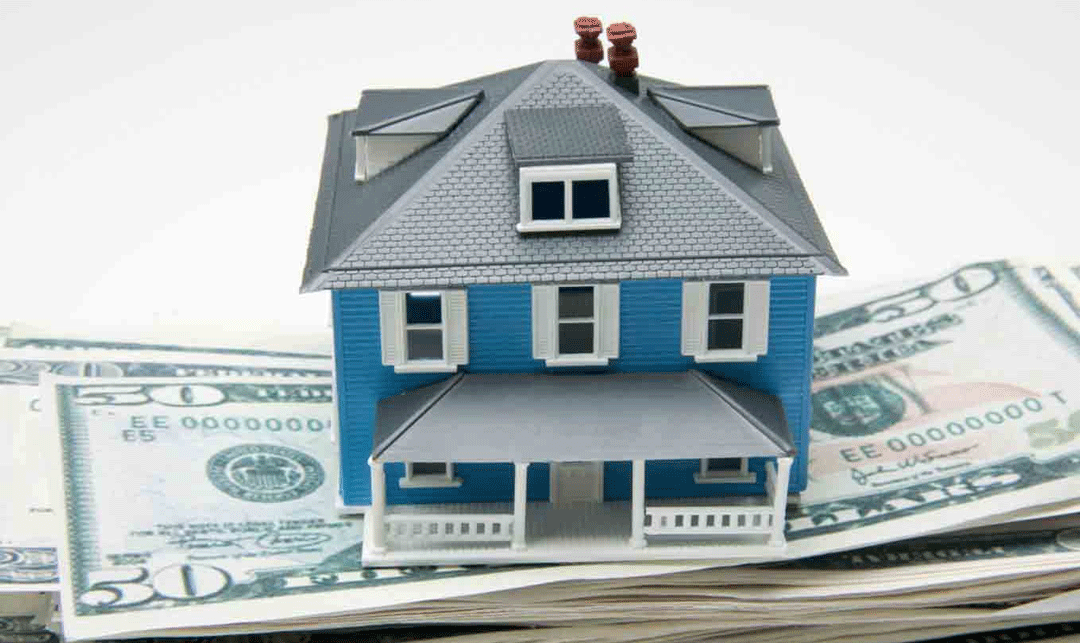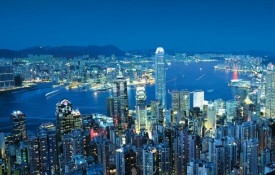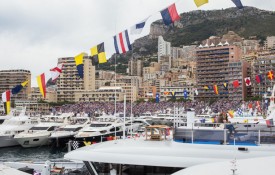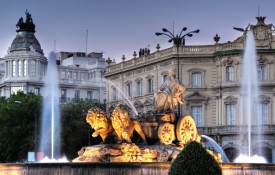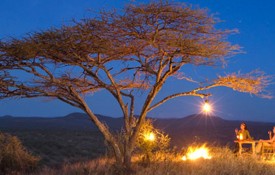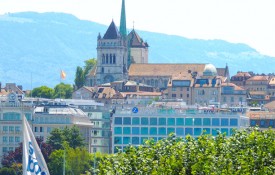The dice have been rolled, and the game is on.
In 1974, Roger Moore’s James Bond put Macau on the map for westerners in The Man With The Golden Gun. However, in the last decade it has been Las Vegas-based billionaire Sheldon Adelson who has been the man of action, convincing Macau’s formidable business leader, Stanley Ho, to forge an international bridge that would welcome a broader base of tourists and business professionals.
Thanks to Adelson’s involvement, as well as some real estate and business involvement from Steve Wynn and other American interests, the Macau of 2014 is playing to win in the “destination” stakes, especially with the billions of dollars and extensive civic planning poured into the area’s pre-existing hotel “strip” and the Cotai Strip (developed by Adelson’s Las Vegas Sands Corporation) which connects the Macau Peninsula, and former Taipa and Coalone islands in a luxurious, futuristic way.
Macau is best known as Asia’s largest destination for gambling. However, it is now ready to assume its place as a culturally rich vacation destination (including 17 UNESCO heritage sites) and a center for international business dealings. In fact, an optimistic Sheldon Adelson has been known to point out that, “instead of people saying Macau is the Asian Vegas, Vegas will be regarded as the American Macau.” Indeed, it’s turning out that the streets of Macau, particularly Cotai, are not only paved with gold, but also opportunity.
A Long and Winding Road To Riches
Just like Las Vegas, Macau’s beginnings were inauspicious. Prior to the arrival of Portuguese traders, the fishing village had a population of 400. Once traders obtained the rights to anchor ships in Macau’s harbors in 1535, it became a key trade center. However, with the decline of Portugal as a world power in the 17th and 18th centuries, trading routes were challenged by other powers such as the Dutch and the British. After China ceded Hong Kong to the British in 1842, Macau’s position as a major regional trading center declined further as larger ships were drawn to Hong Kong’s Victoria Harbor.
Fishing re-emerged as a dominant economic activity in Macau for several decades, but the region’s fortunes began to change when gambling was first legalized in the 19th century. The first casino monopoly concession was granted to the Tai Xing Company in 1937. However, the real payoff with gambling took root in 1962 when the government granted the Sociedade de Turismo e Diversoes de Macau (STDM), a syndicate jointly formed by Hong Kong and Macau businessmen, the monopoly rights to all forms of gambling. The STDM introduced western-style games and modernized marine transport between Macau and Hong Kong, attracting millions of gamblers from Hong Kong every year.
In the 1970s, Macau saw rapid development in manufacturing. Thanks to Macau’s low-cost operating environment and its surplus quotas under the Multi Fiber Arrangement (MFA), many Hong Kong industrialists established textile and garment manufacturing bases in Macau. At its golden age in the 1980s, the manufacturing sector accounted for about 40% of Macau’s GDP; textiles and garments accounted for about 90% of Macau’s total visible exports.
As the manufacturing sector has gradually declined since the early 1990s, Sheldon Adelson, Steve Wynn, Australian tycoon James Packer and others initiated multi-million dollar projects that would not only change the physical face of Macau but also its prospects as a global financial power.
Business and Industry: From the Silk Road to the Global Finance Superhighway
Today, gambling brings in more than $33 billion U.S. of revenue to Macau, more than five times the amount on the Las Vegas Strip, and accounts for more than 40 percent of its GDP. Furthermore, 50 percent of Macau’s revenue comes from gambling and 20 percent of its population are employed by the casinos. Therefore, it is no surprise that high-rolling VIPs account for more than 2/3 of casino takings. One thing a little more surprising is that there are more than four times as many gambling tables per 1,000 residents than hospital beds.
Even with the riches rolling in, however, games of chance are not the only gambles that may pay off for Macau.
The Real Estate Game Changer
The Cotai Strip, spearheaded by the Las Vegas Sands Corporation, was not just a major land reclamation project joining the two islands of Coloane and Taipa, but personified the might and the potential of major real estate developments in Macau. While the Venetian Resort Hotel Macau could be recognized as the anchor project of the strip, the strip has since filled out with dazzling multi-property complexes including Macao Studio City (W, Ritz-Carlton, Marriott, Playboy), Caesar’s Entertainment Corporation (which includes Caesar’s Golf), City of Dreams (Crown Towers, Hard Rock Hotel, Grand Hyatt) The Phoenix (Holiday Inn Macau, Intercontinental Macao, Emperor Hotel), and Sands Cotai Central (Sheraton Macau, Conrad Macau, Holiday Inn Macau).
Transportation and Infrastructure
Air Macau, the island’s airline, is headquartered in Macau, and there’s a new airport in the works. Ferries that have served commuters between Hong Kong and its airport and Macau are still operating at their upper limit. However, the Hong Kong-Zhuhai-Macau Bridge, a $9 billion, 26-mile and six-lane network of bridges, offers a multi-tiered economic boost to this “tri-city” area. The bridge (along with a companion 4.2-mile undersea tunnel to connect the three urban centers) is the brainchild of Hong Kong businessman Gordon Wu, who decades ago suggested the westward link to boost the city’s competitiveness. According to The Wall Street Journal, construction is well under way, and with the projected opening in 2016, the bridge will cut the travel time by car between the two sides of the Pearl River Delta from four hours to just 45 minutes.
 Banking & Finance
Banking & Finance
There are twenty other licensed banks, sixteen of which are foreign. Macau has five of the top 500 commercial banks in Asia, including Banco Tai Fung and Industrial and Commercial Bank of China. Furthermore, Macau has emerged as an offshore financial center, a tax haven, and a free port with no foreign exchange control regimes. The offshore finance business is regulated and supervised by the Monetary Authority of Macao, while the regulation and supervision of the offshore non-finance business is mainly controlled by the Macau Trade and Investment Promotion Institute.
Media
Macau has the highest “media density” in the world, including nine Chinese-language dailies, three Portuguese-language dailies, two English-language dailies, half a dozen Chinese-language weeklies and one Portuguese-language weekly. About two dozen newspapers from Hong Kong, mainland China, Taiwan and the Philippines are shipped to Macau every early morning. Ignite Media Group is the enclave’s most dominant media company.
The Spice of Life: Macau’s arts, cuisine, sport and entertainment
Outside the casinos and the boardrooms, Macau is a vibrant quilt of fascinating sights reflecting its storied history since 1535. Highlights include Handover Museum (where other Chinese provinces commemorated Macau’s return to China in 1999); the Museum of Macau (documenting its centuries-old history), the Grand Prix Museum and the Macau Wine Museum. City neighborhoods are just as diverse, from the European charm of Senado Square, to the bustling neighborhood surrounding the “Red Market,” an Anthony Bourdain kind of experience where one’s dinner of choice is so fresh that it is literally living and breathing until the customer pays for it. In the heart of Macau’s city center, one can commune with nature inside the exquisite Lou Lim Ioc Gardens and the A-Ma Temple.
One of the most ambitious attractions is The House of Dancing Water, a show that ups the ante of the spectacle of permanent Las Vegas shows like Le Reve the various iterations of Cirque de Soleil. The show, which opened in 2010 at City of Dreams, is the vision of Le Reve creator Franco Dragone. To say it is a show of epic proportions would be a slight understatement, as it is the result of five years of development and two years of rehearsal and production, with over HKD2 billion in investments. Its custom theater is one of the largest water-based theaters ever built, holding approximately 3.7 million gallons of water. An astonishing 400 costumes are required throughout the course of an entire show.
Adelson’s Land of Opportunity
One of the most Vegas-like destinations in Macau, ironically, is the family-friendly theme park Macau Fisherman’s Wharf, which endeavors to bring the world to the former Portuguese colony by means of themed areas modeled after Amsterdam, Rome, Miami, New Orleans, The Middle East and Imperial Mainland China.
That said, Sheldon Adelson recognized attractions such as Fisherman’s Wharf were the tip of the iceberg for Macau’s tourism potential. Las Vegas Sands opened the Sands Macao in 2004. In 2008, Adelson and wife, Dr. Miriam Adelson, invested the first $475 million into a company overseeing ambitious plans to accelerate Macau into the city of tomorrow.
Adelson next saw that 1 billion people are within a three-hour flight of Macau, and around 3 billion people are estimated to live within a five-hour flight. He realized that his company’s future was in creating not one hotel, but establishing an entire strip—a Las Vegas-like Boulevard in Macau featuring many hotels of various styles and price ranges. But there were physical challenges to his idea: the total area of the small peninsula and two islands that make up Macao is less than 12 square miles; this area is densely populated; and, at the time, there was no land for such a large strip.
So Adelson created the land: he had his company fill the bay between the Coloane and Taipa islands. He called the area the Cotai Strip.
 The Sheraton Macao Hotel – The ultimate home base in the new Macau
The Sheraton Macao Hotel – The ultimate home base in the new Macau
This impressive, now the largest hotel in Macau, and palatial property has 3,896 rooms and suites. The hotel’s top tier Ambassador and Presidential Suites have hosted royalty and international celebrities. In addition to an assortment of onsite dining options, guests can enjoy world class spa Shine, a fully appointed Executive Lounge with private meeting rooms, and, perhaps most impressively, total event space of 214,000 square feet.
The hotel’s dedicated events team can accommodate anything from a small board meeting of 12 to a theater-style gathering of 5,000 guests. The events team has an expansive network of resources (event companies, professional exhibition and conference organizers, destination management companies, and team-building specialists) that enable them to prepare bespoke events packages, complete with state-of-the-art audiovisual technology for meetings, conferences and conventions.
sheratonmacao.com
Getting to Macau
Cathay Pacific and Eva Air offer flights between the U.S. and Macau. There is a new international airport in the works.









